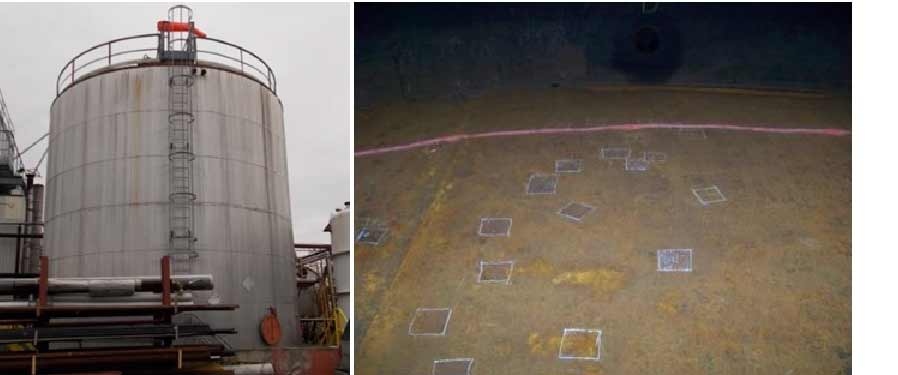Just How Tank Welding Inspection Prevents Future Structural Failures
Just How Tank Welding Inspection Prevents Future Structural Failures
Blog Article
Comprehensive Overview to Effective Storage Tank Welding Examination Techniques and Best Practices for High Quality Guarantee
In the world of container welding, strenuous examination strategies are extremely important for safeguarding architectural stability and guaranteeing conformity with market guidelines. As we discover these necessary parts, it comes to be clear that a proactive examination technique is not simply valuable, however crucial for operational success in environments dealing with dangerous products.
Value of Container Welding Assessment

Container welding assessment works as a preventative procedure, recognizing prospective issues such as cracks, porosity, or incorrect joint penetration before they rise into severe issues. Regular examinations not just abide with sector guidelines and standards yet additionally improve the long life of the tanks, reducing the demand for pricey fixings or replacements.

Aesthetic Inspection Techniques
Employing organized aesthetic examination strategies is essential for assessing the quality and stability of welded joints in tanks. This technique works as the first line of defense in determining potential issues such as splits, undercuts, and not enough infiltration. The assessor must approach the task with an eager eye, utilizing ideal tools like amplifying glasses, flashlights, and mirrors to improve visibility.
During the examination procedure, the assessor must review the weld profile, ensuring it adheres to specified requirements and guidelines (Tank Welding Inspection). This includes analyzing the bead width, height, and blend with the base material. Examiners should additionally pay close attention to the surrounding areas for signs of thermal distortion or contamination that might affect the weld's performance
Documentation of searchings for is necessary; inspectors should record any abnormalities, categorizing them by intensity for further examination. This systematic technique not just aids in immediate defect identification but likewise adds to long-term quality guarantee by guaranteeing conformity with industry standards. Normal training and calibration of aesthetic evaluation methods even more boost the dependability of assessments, ultimately bring about much safer and extra long lasting storage tank structures.
Non-Destructive Checking Techniques
Non-destructive screening (NDT) techniques are regularly used in container welding inspections to analyze the honesty of welded joints without compromising their architectural honesty. These strategies are essential for determining issues such as fractures, voids, and additions that might bring about tragic failings if left unnoticed.
Common NDT methods include ultrasonic screening (UT), which makes use of high-frequency acoustic waves to discover internal defects; radiographic screening (RT), using X-rays or gamma rays to picture weld frameworks; and magnetic bit screening (MT), which reveals surface and near-surface discontinuities in ferromagnetic products (Tank Welding Inspection). Liquid penetrant screening (PT) is additionally widely made use of, capable of discovering surface-breaking problems by using a fluorescent or color comparison color
Each NDT technique has its particular applications and advantages, making it necessary for inspectors to choose the proper strategy based upon the material and the kind of weld being reviewed. The assimilation of these NDT techniques right into the examination process boosts the total quality control structure, ensuring that welded you can try these out storage tanks meet security and performance requirements. Inevitably, NDT plays a critical role in preserving the integrity and durability of storage tank frameworks in various industrial applications.

Documentation and Reporting
Making certain comprehensive documents and reporting during container welding examinations is important for keeping compliance with market standards and helping with effective communication amongst stakeholders. Correct documentation works as an extensive document of inspection tasks, searchings for, and any kind of restorative activities taken throughout the welding process. This info is necessary not only for quality control but likewise for audits and governing reviews.

A well-structured assessment report must consist of details such as the date of evaluation, names of examiners, welding treatments used, see here now materials made use of, and any kind of discrepancies from established criteria. Additionally, pictures and layouts can enhance the clarity of the record, providing aesthetic context to the findings. It is likewise vital to document any kind of non-conformities along with their resolution, making sure that all stakeholders are informed of prospective threats and the actions required to alleviate them.
Moreover, preserving a centralized data source for all assessment records permits simple access and evaluation, promoting a society of openness and responsibility. By focusing on careful documentation and coverage, companies can not only promote top quality guarantee yet also reinforce their reputation within the industry, ultimately bring about enhanced safety and security and operational effectiveness.
Continuous Improvement Practices
Continual renovation practices are vital for improving the quality and performance of storage tank welding inspections. One reliable approach involves regular training and upskilling of examination personnel to remain abreast of the most current welding modern technologies and standards.
Furthermore, utilizing data-driven evaluation permits companies to track inspection outcomes, recognize patterns, and pinpoint areas for enhancement. Using devices such as origin cause Clicking Here analysis can help in comprehending the underlying issues leading to defects, allowing targeted treatments. In addition, obtaining comments from examination groups and stakeholders creates a joint environment that urges cutting-edge services.
Including advanced modern technologies, such as automated evaluation systems and real-time monitoring, can substantially improve the precision and speed of assessments. Regular audits of the assessment processes also add to a culture of responsibility and constant improvement. Inevitably, these continual renovation techniques not just raise the high quality of container welding inspections yet also contribute to overall operational quality and customer contentment.
Final Thought
In final thought, efficient container welding assessment is crucial for making certain the structural honesty and safety and security of storage space systems, particularly those managing dangerous materials. Utilizing a combination of aesthetic evaluation methods and non-destructive testing approaches assists in the early identification of defects, consequently maintaining compliance with market criteria.
Report this page